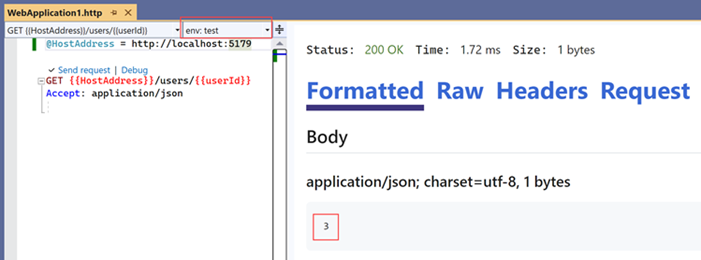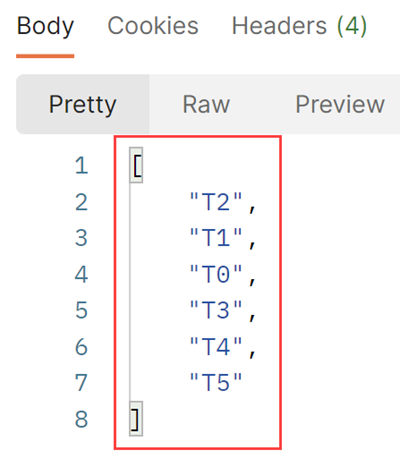
|
| Quick Replace (Ctrl + H) |

|
| Replace in Files (Ctrl + Shift + H) |
// EmployeeId
// employeeId
// employeeid
// EMPLOYEEID
// employeeId
// CustomerId
// customerId
// customerid
// CUSTOMERID
// customerId

|
| Quick Replace (Ctrl + H) |

|
| Replace in Files (Ctrl + Shift + H) |
// EmployeeId
// employeeId
// employeeid
// EMPLOYEEID
// employeeId
// CustomerId
// customerId
// customerid
// CUSTOMERID
// customerId
.NET 8 offers some exciting updates to System.Text.Json.
One of my favorites of them is, now we have some handy additional functionalities on JsonNode. The JsonNode has following new methods:
namespace System.Text.Json.Nodes;
public partial class JsonNode
{
// Creates a deep clone of the current node and all its descendants.
public JsonNode DeepClone();
// Returns true if the two nodes are equivalent JSON representations.
public static bool DeepEquals(JsonNode? node1, JsonNode? node2);
// Determines the JsonValueKind of the current node.
public JsonValueKind GetValueKind(JsonSerializerOptions options = null);
// If node is the value of a property in the parent object, returns its name.
public string GetPropertyName();
// If node is an element of a parent JsonArray, returns its index.
public int GetElementIndex();
// Replaces this instance with a new value, updating the parent node accordingly.
public void ReplaceWith<T>(T value);
}
public partial class JsonArray
{
// Returns an IEnumerable<T> view of the current array.
public IEnumerable<T> GetValues<T>();
}
For example, GetValueKind can be a huge win.
Consider the following example with .NET 8.
using System.Text.Json.Nodes;
JsonNode jsonNode = JsonNode.Parse("""
{
"name": "John Doe",
"age": 42,
"isMarried": true,
"addresses":
[
{ "street": "One Microsoft Way", "city": "Redmond" },
{ "street": "1st Street", "city": "New York" }
]
}
""")!;
Console.WriteLine(jsonNode.GetValueKind());
//Object
Console.WriteLine(jsonNode["name"]!.GetValueKind());
//String
Console.WriteLine(jsonNode["age"]!.GetValueKind());
//Number
Console.WriteLine(jsonNode["isMarried"]!.GetValueKind());
//True
Console.WriteLine(jsonNode["addresses"]!.GetValueKind());
//Array
Imagine how much code we needed to write prior to .NET 8 to achieve the same.
Isn't this handy?
Read more:
What’s new in System.Text.Json in .NET 8
Happy Coding.
WebApplicationBuilder builder = WebApplication.CreateBuilder(args);
WebApplication app = builder.Build();
app.MapGet("/users/{userId}", (int userId) =>
{
return userId;
});
app.Run();
@HostAddress = http://localhost:5179
@userId = 1
GET {{HostAddress}}/users/{{userId}}
Accept: application/json
{
"development": {
"userId": 2
},
"test": {
"userId": 3
}
}

|
| Environments |

|
| Environment: development |

|
| Environment: test |
{
"development": {
"userId": 4
}
}

|
| User-specific environment file |
In this post let's see how we can preserve Stack<T> order when it's getting passed between Orchestrators/Activities in a .NET In-Process Azure Durable Functions.
As you already know, when using Orchestrators/Activities in an Azure Durable Function, different types of data are being serialized and persisted. Durable Functions for .NET In-Process internally uses Json.NET to serialize orchestration and entity data to JSON.
And when you pass in a Stack<T> to an Orchestrator or an Activity for an example, the order of items will not be preserved when it's serialized. It's actually an issue with Json.NET.
We can reproduce the issue simply by creating a simple .NET In-Process Azure Durable Function, something like below.
public static class Function1
{
[FunctionName("HttpStart")]
public static async Task<HttpResponseMessage> HttpStart(
[HttpTrigger(AuthorizationLevel.Anonymous, "get", "post")] HttpRequestMessage req,
[DurableClient] IDurableOrchestrationClient starter,
ILogger log)
{
string instanceId = await starter.StartNewAsync("Function1");
log.LogInformation("Started orchestration with ID = '{instanceId}'.", instanceId);
return await starter.WaitForCompletionOrCreateCheckStatusResponseAsync(req, instanceId, TimeSpan.FromSeconds(30));
}
[FunctionName("Function1")]
public static async Task<Stack<string>> RunOrchestrator1([OrchestrationTrigger] IDurableOrchestrationContext context)
{
Stack<string> transitions = new();
transitions.Push("T0");
transitions.Push("T1");
transitions.Push("T2");
return await context.CallSubOrchestratorAsync<Stack<string>>("Function2", transitions);
}
[FunctionName("Function2")]
public static async Task<Stack<string>> RunOrchestrator2([OrchestrationTrigger] IDurableOrchestrationContext context)
{
Stack<string> transitions = context.GetInput<Stack<string>>();
transitions.Push("T3");
transitions.Push("T4");
transitions.Push("T5");
return await Task.FromResult(transitions);
}
}
The expected output should be as follows.
[
"T5",
"T4",
"T3",
"T2",
"T1",
"T0"
]

|
| Incorrect Result |
This can be addressed by applying a custom serialization to the Durable Function.
First, we need to create a custom JsonConverter to serialize/deserialize Stack<T> correctly preserving the order.
/// <summary>
/// Converter for any Stack<T> that prevents Json.NET from reversing its order when deserializing.
/// https://github.com/JamesNK/Newtonsoft.Json/issues/971
/// https://stackoverflow.com/a/39481981/4865541
/// </summary>
public class StackConverter : JsonConverter
{
public override bool CanConvert(Type objectType)
{
return StackParameterType(objectType) != null;
}
public override object ReadJson(JsonReader reader, Type objectType, object existingValue, JsonSerializer serializer)
{
if (reader.TokenType == JsonToken.Null)
{
return null;
}
try
{
Type parameterType = StackParameterType(objectType);
MethodInfo method = GetType().GetMethod(nameof(ReadJsonGeneric), BindingFlags.NonPublic | BindingFlags.Static);
MethodInfo genericMethod = method.MakeGenericMethod(new[] { parameterType });
return genericMethod.Invoke(this, new object[] { reader, objectType, existingValue, serializer });
}
catch (TargetInvocationException ex)
{
// Wrap the TargetInvocationException in a JsonSerializerException
throw new JsonSerializationException("Failed to deserialize " + objectType, ex);
}
}
public override bool CanWrite { get { return false; } }
public override void WriteJson(JsonWriter writer, object value, JsonSerializer serializer)
{
throw new NotImplementedException();
}
private static Type StackParameterType(Type objectType)
{
while (objectType != null)
{
if (objectType.IsGenericType)
{
Type genericType = objectType.GetGenericTypeDefinition();
if (genericType == typeof(Stack<>))
{
return objectType.GetGenericArguments()[0];
}
}
objectType = objectType.BaseType;
}
return null;
}
private static object ReadJsonGeneric<T>(JsonReader reader, Type objectType, object existingValue, JsonSerializer serializer)
{
if (reader.TokenType == JsonToken.Null)
{
return null;
}
List<T> list = serializer.Deserialize<List<T>>(reader);
Stack<T> stack = existingValue as Stack<T> ?? (Stack<T>)serializer.ContractResolver.ResolveContract(objectType).DefaultCreator();
for (int i = list.Count - 1; i >= 0; i--)
{
stack.Push(list[i]);
}
return stack;
}
}
using Microsoft.Azure.Functions.Extensions.DependencyInjection;
using Microsoft.Azure.WebJobs.Extensions.DurableTask;
using Microsoft.Extensions.DependencyInjection;
using Newtonsoft.Json;
using System;
using System.Collections.Generic;
using System.Reflection;
[assembly: FunctionsStartup(typeof(DurableFunctions.StackSerialization.Startup))]
namespace DurableFunctions.StackSerialization;
public class Startup : FunctionsStartup
{
public override void Configure(IFunctionsHostBuilder builder)
{
builder.Services.AddSingleton<IMessageSerializerSettingsFactory, CustomMessageSerializerSettingsFactory>(); // ...
}
/// <summary>
/// A factory that provides the serialization for all inputs and outputs for activities and
/// orchestrations, as well as entity state.
/// </summary>
internal class CustomMessageSerializerSettingsFactory : IMessageSerializerSettingsFactory
{
public JsonSerializerSettings CreateJsonSerializerSettings()
{
return new JsonSerializerSettings
{
TypeNameHandling = TypeNameHandling.None,
DateParseHandling = DateParseHandling.None,
Converters = new List<JsonConverter>
{
new StackConverter()
}
};
}
}
}